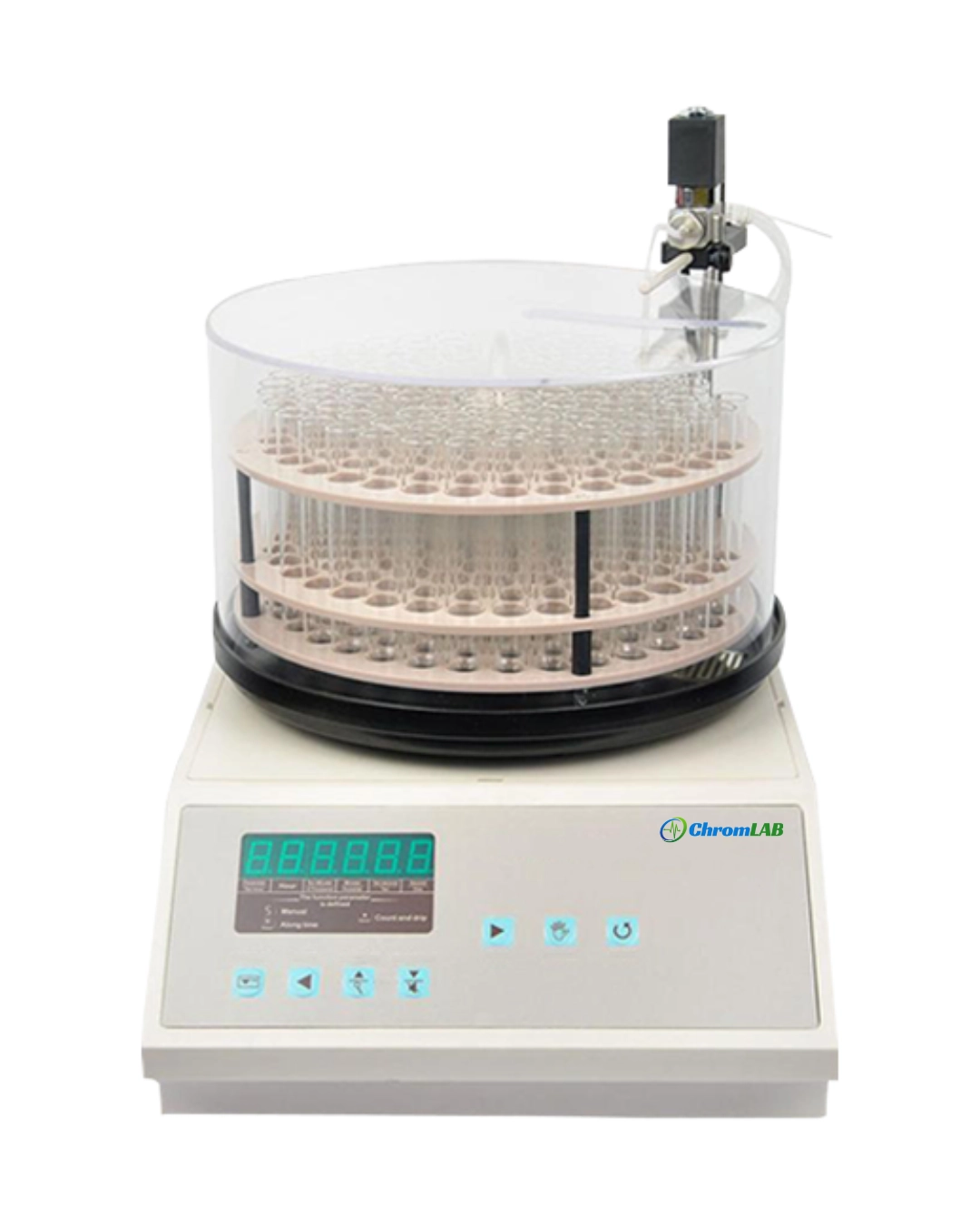
Automatic Fraction Collector CLFC-401 offers a generous tube capacity of 100, for convenient sample collection. Supports various rack configurations to allow flexibility in tube sizes. Equipped with an LCD display for real-time monitoring and data analysis. Utilizes an automated system to minimize manual intervention and ensure accuracy. Our Automatic Fraction Collector features an enclosed design to prevent contamination and evaporation.
| Tube quantity | 100 |
| Maximum capacity | 12ml |
| Time set | 1 second to 24 hours |
| Display | LED |
| Working environment conditions | Temperature 0-40℃, Humidity <85% |
| Power supply | 110/220V 50Hz |
| Dimensions | 260×370×300 mm |
| Net Weight | 8.5 kg |
Sample Handling
Software Interface
Tube Compatibility
Alarm System
Round Turntable Design
Automatic Fraction Collector CLFC-401 is ideal for chromatography, protein purification, and pharmaceutical research, ensuring precise and efficient sample collection.
Ask Our Experts
Frequently Asked Questions
Our Automatic Fraction Collector can hold up to 100 tubes, allowing for extended and uninterrupted sample collection.
Yes, it supports various rack configurations, offering flexibility for different tube sizes and lab needs.
Yes, it utilizes a fully automated system, reducing manual handling and improving accuracy.
Our model has an enclosed design to minimize sample contamination and evaporation.
Key benefits include high tube capacity, customizable time settings, automated operation, real-time monitoring, and a contamination-free enclosed system.
An Automatic Fraction Collector is a lab device used to collect separated liquid samples (fractions) from chromatography or other liquid handling processes into individual containers, based on time, volume, or signal.
Yes, our automatic fraction collectors often integrate with systems like HPLC, FPLC, or flash chromatography, using start/stop signals or detector peak outputs for synchronized collection.
Automation reduces manual error, increases throughput, improves precision, and allows unattended operation—especially useful for large or time-consuming separations.
Regular cleaning of the tubing, checking for leaks, and ensuring proper alignment of racks and tubing are essential for consistent performance.
They are widely used in pharmaceutical, biotech, chemical, and academic research labs for compound isolation, protein purification, and other separation workflows.

